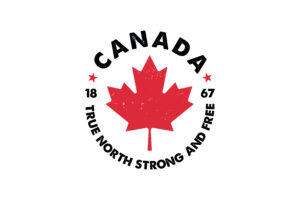Over the last few months, we’ve written a number of articles about state and federal actions related to chemical and additive bans in food products and the impact on the food industry. While we’re not seeing a waning of that focus, the spotlight is expanding to, again, question the presence of heavy metals in foods, particularly foods for infants and young children. The attention isn’t new, as we’ve continued to update the industry on federal and consumer activity related to arsenic, lead, cadmium, and mercury as well. However, there is a recent honing in on lead due to the consumer group reporting of “concerning” levels of lead in lunch snack kits, the 2023 economic adulteration of a cinnamon used in an applesauce, and the ongoing findings of levels of lead and other heavy metals in baby foods.
The primary concern remains the impact on foods commonly eaten by infants and young children because their smaller body sizes, maturing systems, and metabolism make them more susceptible to the harmful effects. However, as California’s Prop 65 and the recent Consumer Reports (CR) article on lead levels in lunch snack packs illustrate, states can set lower limits for heavy metal presence in foods than those set by the federal agencies. In fact, the percentages used in the CR article were based on California’s maximum allowable dose level (0.5 μg/day), rather than the FDA’s interim reference level set (2.2 μg/day) or CDC’s blood reference level (3.5 μg/day).
To put this in perspective, not only were all the products below the set “safe harbor” levels of all three agencies, but when considered against those set by the federal agencies, the 74% level listed by CR would be only 17% of FDA’s level, and only 11% of CDC’s. Much lower, and less sensational, statistics. In fact, the government of California itself states that a food containing a Proposition 65-listed chemical “does not mean that these foods should never be eaten. But interested consumers can decide what and how often to eat certain foods if they wish to reduce their exposure to these chemicals.”
While the CR article cannot be said to be inaccurate, as the writers simply found the lowest possible level for maximum impact, consumers are reading these articles and taking the interpretations at face value, and both state and federal legislators are paying attention (particularly with this being an election year). The concern is certainly not misplaced, as high levels of heavy metals are harmful and food businesses need to be doing all they can to reduce the levels.
But there also needs to be a balance between striving for zero and the natural occurrence of heavy metals in the environment which is essentially unavoidable in the earth. Arsenic, lead, cadmium, and mercury occur naturally at varying levels in the air, water, and soil, with the amount of any of these in a food depending on the amount in the environment where the crop is grown, animal is raised, and/or food is processed, along with how much the plant or animal takes up from the environment. Thus, it is not possible to completely prevent these from entering the food supply and still have enough food to feed the world, but some levels can be reduced through agricultural or manufacturing practices – and food establishments are legally required to assess risks of heavy metals in ingredients and food and significantly minimize or prevent chemical hazards where possible. FDA defines its process of determining if the level of lead in a food is a potential health concern as considering the toxicity of lead and potential exposure based on the lead level in the food and estimated consumption, along with the risks specific to vulnerable populations (e.g., very young children). If an unsafe level is found, the agency takes regulatory action as they do with all chemicals.
While a food establishment’s first concern should always be the safety of its consumers, the heavy regulatory focus by both federal and state bodies, along with the widely disseminated consumer advocacy, should play into the prioritization of heavy metal minimization. Because there is often little that can be done at the manufacturing level, a best practice is having a complete understanding of one’s supply chain hazards and risks and taking action to minimize these. This can be accomplished through supplier verification and supply chain controls, certificates of analysis from suppliers, incoming goods testing and rejection where applicable, and the changing of out-of-spec suppliers whenever possible, considering potential EMA as well as environmental causes of excess heavy metals.
For assistance in identifying, minimizing, and controlling heavy metals in your products and supply chain, give TAG a call. Our experts can help.





